Four Spartans – two alums, a faculty member, and a current student – played key roles in a pre-Broadway tryout of the new dance musical, Esther, presented by the A.D. Players at the George Theatre in Houston, Texas. This behind-the-scenes collaboration involving three generations of Spartans exemplifies the reach and power of the MSU Department of Theatre network and the importance Theatre faculty and alums place on mentoring the next generation of theatre professionals.
The creative team behind Esther, led by director Rachel Klein and choreographer Chase Brock, spent the last seven years developing the show, which is a modern retelling of the ancient story of a young Jewish orphan who rises to become queen of Persia and saves her people from annihilation. Set to a pop-inspired score, the production blends elements of traditional musical theater with high-energy dance numbers. The pre-Broadway tryout at the George Theater, which ran Sept. 1- 22, 2024, starring Dancing with the Stars’ Sharna Burgess, provided a fully realized staging of the musical, allowing it to be shopped around to potential investors for a larger commercial future.

As the show continues to evolve, the Spartans working behind the scenes of the pre-Broadway tryout made their mark on the look and feel of the production, each contributing to its visual and technical elements. Those Spartans include Kirk Domer, Professor of Scene Design in the Department of Theatre at MSU, who served as scenic designer for the production; MSU alums Jessie (Cole) Mullins (B.A. Theatre 2006), the stage manager, and Eric Franzen (MFA Theatre 2012), the costume designer; and MSU Theatre major Matty Peterson, who worked as an assistant scenic designer. This unique confluence of talent illustrates how Spartans continue to support one another long after they leave campus.
For Domer, mentoring students and working alongside alums is a way to support the next generation of Spartans. He has worked on multiple productions with Houston’s A.D. Players and bringing an MSU student along to gain hands-on experience has become a regular part of his professional practice.
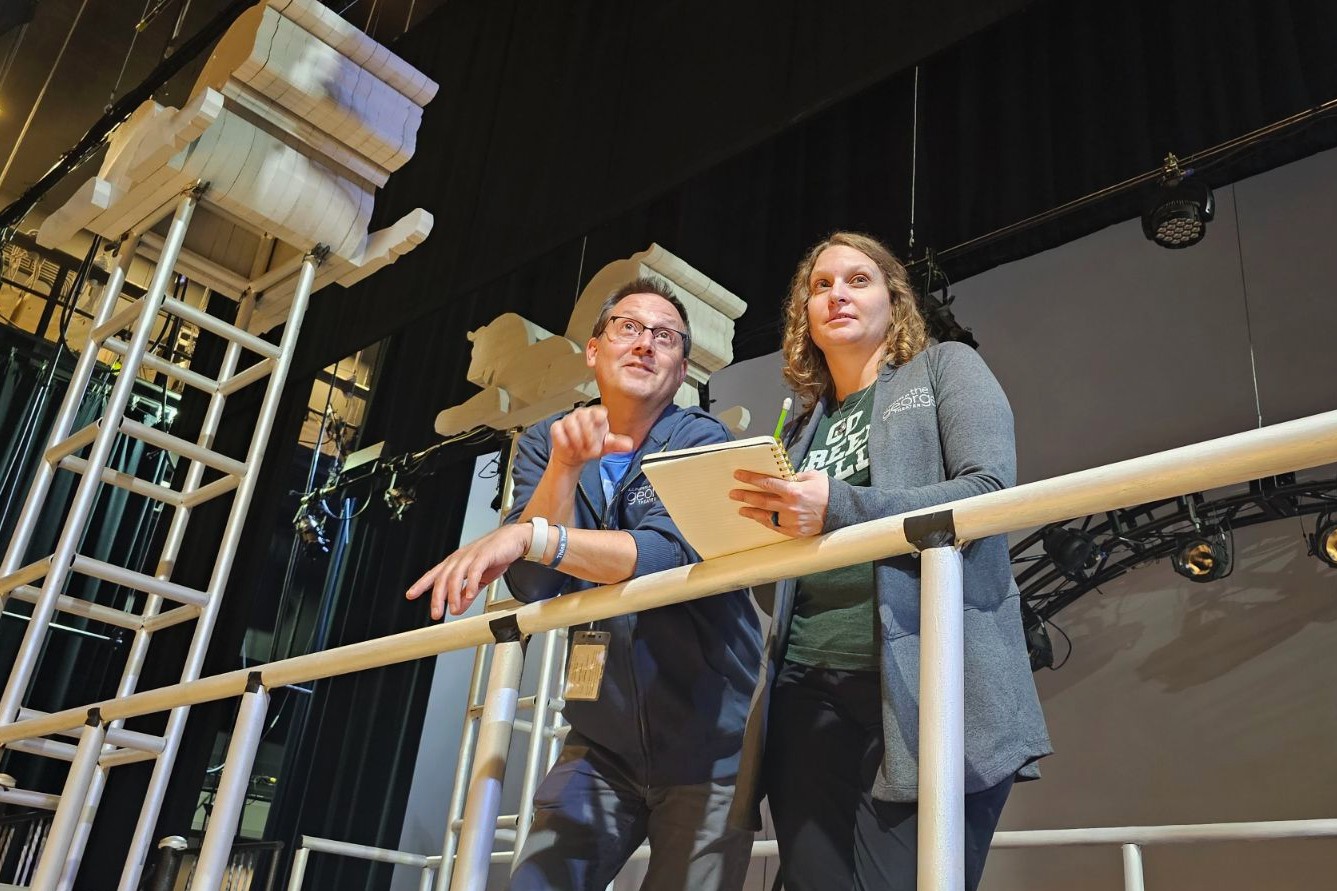
Each summer during Domer’s 10-day residence with A.D. Players, he brings a different student with him. They stay with Mullins and her husband Michael Mullins, the Design and Production Manager for A.D. Players and a former MSU Theatre major.
“This has been a fun exploration I’ve been having in Houston for the last 10 years, working and living with an alum from the Theatre program. Jessie and Michael Mullins have been very generous to open their home to us and allow us to stay there so we can afford to have a student go along with me,” Domer said. “When I teach students, I tell them: ‘learn how I do it, challenge how I do it so you find your own voice, then go get a job and hire me.’ And that’s exactly what they did.”
For Peterson, working on Esther was a significant step toward his goal of becoming a professional designer. Originally from San Antonio, Texas, he has always wanted to pursue theatre as a career.
When Domer asked him to join the Esther production as an assistant scenic designer, he saw it as a valuable opportunity to apply what he has learned in the classroom to a professional environment.
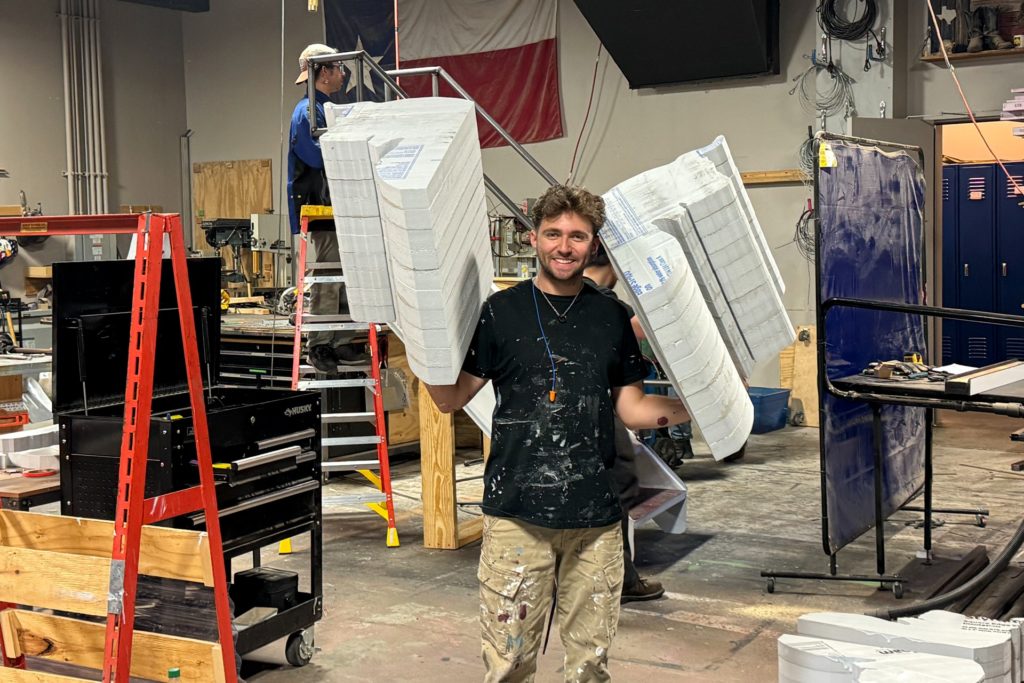
“Kirk Domer and I did a show together in February and because of this and our ability to work well together, he approached me this past summer about working on this project with him,” Peterson said. “So much of this industry is about knowing people and finding the people you work well with. It was uplifting to see these former and current Spartans helping one another further each other’s careers.”
While Peterson primarily focuses on lighting design in his studies, MSU’s emphasis on a well-rounded education prepared him to tackle the challenges of scenic design.
“MSU Theatre does a phenomenal job of keeping all theatre students well-rounded,” Peterson said. “Although most of the time I am a lighting student, I felt ready when put in the position as an assistant scenic designer based on the classes I have taken and the hands-on experience I have had.”
The experience not only helped Peterson grow as a designer but also gave him a new perspective on the industry and the importance of mentorship.
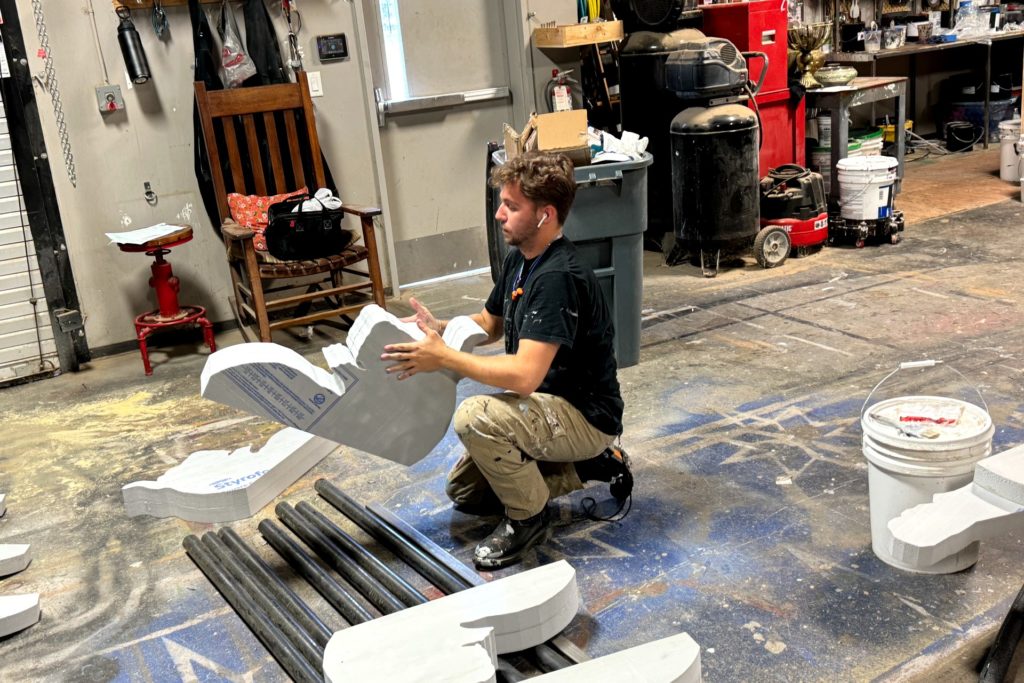
“I really look up to the way that Kirk organizes his life and finds the balance between being a professor and being a designer,” Peterson said. “My goal one day is to teach theatre at the collegiate level. Seeing how much this experience has helped me, it has inspired me to hopefully be able to bring my students on professional productions as well.”
For Franzen, returning to work with Domer after more than a decade was both a professional opportunity and a nostalgic reunion.
“I hadn’t worked with Kirk since my MFA days at MSU, so when I found out he was the scenic designer, it felt like a full-circle moment,” Franzen said. “We’ve always had a shared language when it comes to collaboration, and it made the process so much smoother.”
Now an Assistant Professor of Theatre at Tennessee State University, Franzen, who has worked with Esther director Rachel Klein multiple times, was elated when she asked him to help her build the show from the ground up.
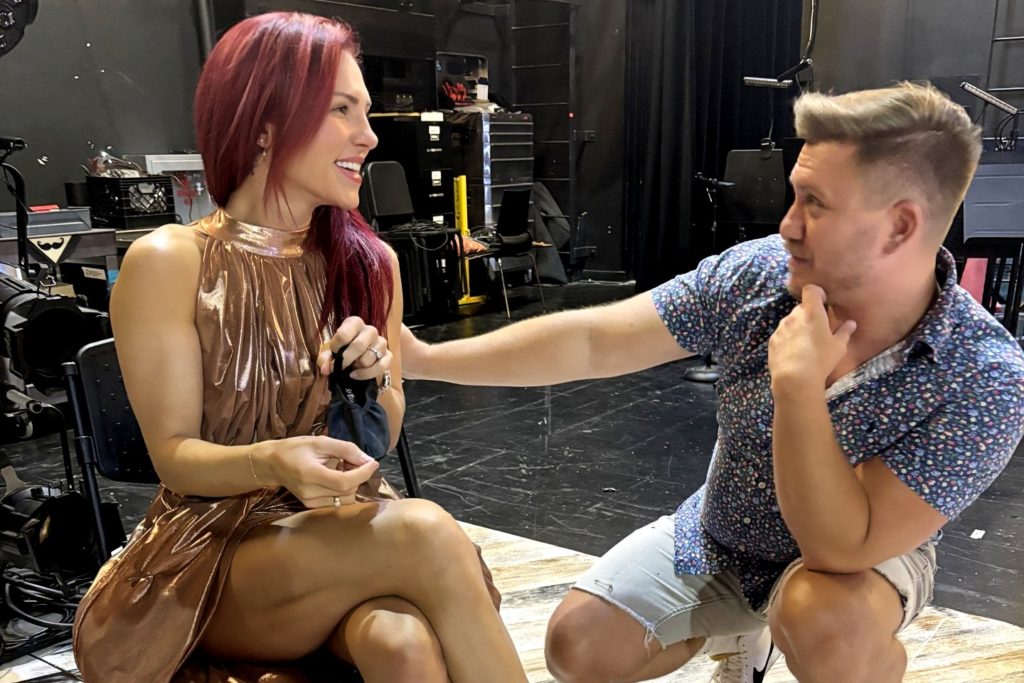
Drawing upon his years of experience in commercial and theatrical productions, Franzen’s approach to costume design on Esther involved balancing biblical and modern influences while meeting the demands of a dance-heavy show. Klein told him to think along the lines of 90s MTV, Trent Reznor, and Game of Thrones.
“I started drawing these biblical fashion looks, and Rachel said: ‘No, they want simpler, throw in more leather.’ You’ve got to be open to taking that feedback, especially on a new show where we don’t know what it looks like,” Franzen said. “You think about how many times people have done Rent and the expectation of what that’s supposed to look like. No one knew what Esther was supposed to look like.”
Working closely with Klein, Franzen deigned all the costumes for the production and created iconic looks for key moments in the show, including a stunning costume sequence for the presentation of the Persian brides.
“One had to unravel out of her clothing on stage. The other had to just be exotic, so I made her a peacock showgirl-esque type of thing. The other was presented sleeping when she came out, so I called her Goodnight Moon because she had a moon headdress,” Franzen said. “The writer said: ‘You really captured such an iconic moment in my writing,’ and he couldn’t be happier.”
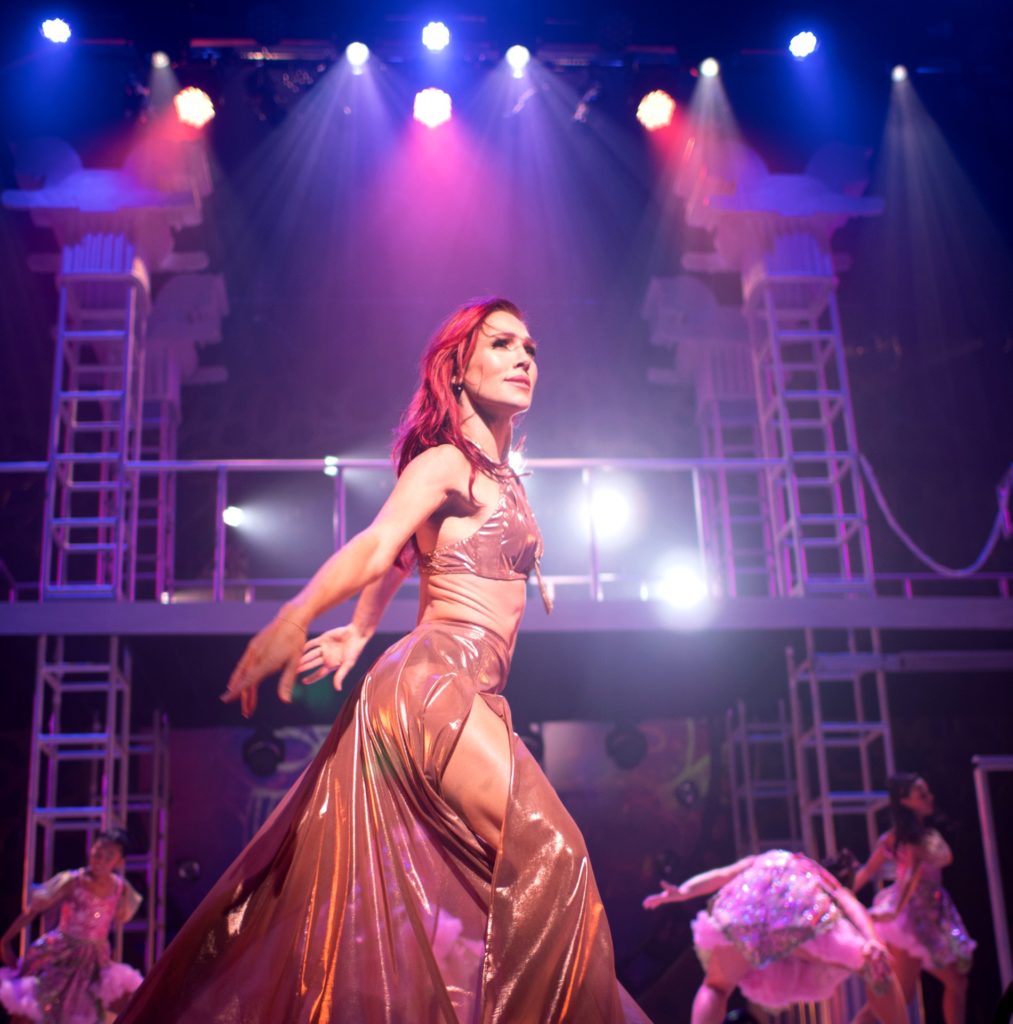
Franzen also reflected on how his MSU education prepared him for the logistical challenges of a production like Esther.
“The flexibility to create amazing work with limited resources is something MSU prepares you for incredibly well,” Franzen said. “They taught us how to really work within the scope of having money and not having money. That’s something I still draw on today.”
For Jessie (Cole) Mullins, the stage manager for Esther, the production was a culmination of years of professional experience and a chance to reconnect with fellow MSU Spartans. Mullins currently serves as Director of Operations for Opera at Rice University, but her career began during her undergraduate years at MSU, where she stage-managed operas and musicals.
“Working on multiple sizes of shows at MSU really taught me about the collaboration that goes into each show,” she said. “Communication is key, and that was instilled in me from the beginning.”
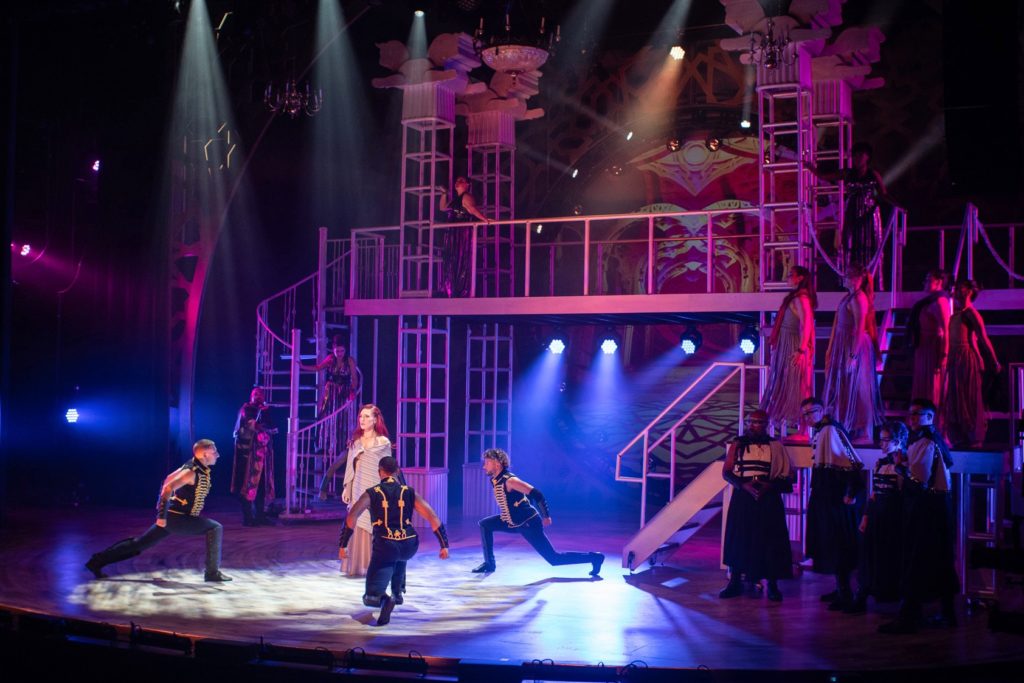
Mullins’ role in Esther began when she managed auditions and connected with the production’s director.
“The theatre had not lined up a stage manager yet,” Mullins said. “The director approached me and said she would love to have me on the team. I loved her vibe and energy and really wanted to work on this project with her.”
As the stage manager, Mullins ensures that the show maintains its artistic integrity across every performance.
“It is my job to learn how the design team would like the show to look and sound so that I can recreate that for every performance after they leave town,” she said. “Once the show is open and running, it is my job to keep up with the safety of the show and make sure the artistic integrity is kept intact.”
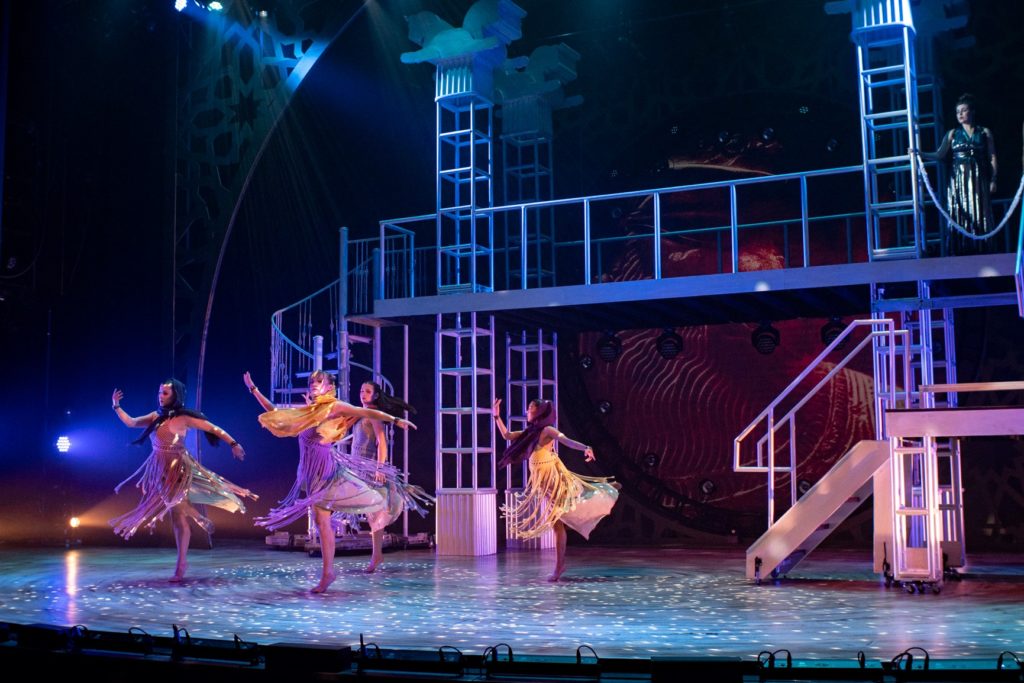
For Mullins, working with fellow Spartans added a special dynamic to the production.
“The best part of working with fellow MSUers is the nostalgia and reminiscing of the good old days,” she said. “It’s great to get updates from the current students about the department and projects they are working on.”
Every Spartan involved with Esther agreed that the project was an affirmation of the importance of the MSU Theatre network – and the joy they feel in being a part of it.

“We support each other, we collaborate, and we make sure the next generation of theater professionals has opportunities like this,” Franzen said. “The industry is small, and it’s all in who you know, and those individuals bringing you into projects. I am so grateful to have had the mentors I had at Michigan State. They pushed me in so many ways to be a little bit more extroverted as an introverted person. And that’s helped tremendously in these instances.”
Mullins echoed those sentiments, reflecting on the students she and her husband have mentored and hosted over the years.
“I hope they remember their experiences in professional settings as positive steppingstones,” she said. “Theater is all about networking, and I hope that we are able to give them as many contacts as possible in the business.”
Ultimately, Esther is an example of the reach and positivity of the MSU Theatre community, a group of artists who stay connected long after graduation and continue to support new generations of Spartans.
“It’s about Spartans helping Spartans,” Domer said. “And that’s the greatest thing we have here.”